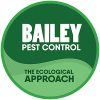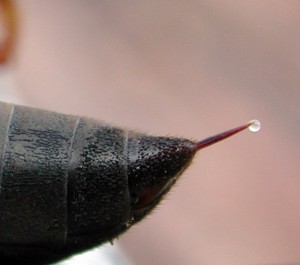Wasps wouldn’t be such a problem if they didn’t come with a nasty sting. You could probably put up with the buzzing noise, couldn’t you?
The sting, however, is a different problem all together.
Picture the scene: You’re out in Brighton, sitting out in your back garden enjoying the sunshine with your family. All of a sudden your peace and tranquility is shattered with a gut-wrenching scream from your youngest child.
They’ve been stung by a wasp.
You know full well this means swelling, intense pain and hours and hours of screaming!
Now you can appreciate why wasps are such a problem! And one that need to be controlled.
So let’s take a closer look at the dreaded wasp sting, what it involves and how you can treat it.
There are two frightening facts about wasp stings.
1. Unlike bee’s, Wasps can sting you again and again and again. Their stinger is smooth and can be used repeated without hurting the wasp. (Due to the Bee’s barbed sting, it is a one-shot deal.)
2. The Wasp’s venom contains a pheromone that attracts other Wasps. It is a very clever defense mechanism. If a wasp stings you it feels threatened. So when it feels threatened it’s venom calls in backup. So remember that a wasp nest can contain up to 10,000 wasps and that’s a lot of angry stingers coming looking for you.
How Does The Wasp Sting?
When a wasp stings you, it will curl its abdomen to point its tip, containing the stinger, toward you. It will then use its abdominal muscles to push its stinger deep into your flesh.
At the same time, the wasp will squeeze venom from a small sac inside its body throught the stinger into your flesh. The quantity of venom isn’t very much, and only a fraction of what a bee sting delivers, but that’s because a wasp can sting you a good few times before you’ve had chance to swat it away.
How To Treat A Wasp Sting
There are some traditional methods of treating a wasp sting. As the wasp’s venom is Akalinic, it is believed that washing the affected area with an acid (such as vinegar) will neutralise the venom and stop the pain.
However, as the venom is made up of many different chemicals, it is unlikely to stop all the pain. Also as the venom is delivered deep into your flesh, it is unlikely that washing the skin with vinegar will get to the area that’s in pain.
Instead, reduce the pain and swelling by using an icepack. Don’t apply the ice directly to the skin. Wrap it in a cloth first. Then to relieve the pain, normally an antihistamin, or an ibuprofen will do the trick.
Please understand the tips in this article should not be a substitute for medical advice from a doctor.
Controlling A Wasp Problem Before It Starts Is Much Safer
Take a look at the other wasp and wasp control content on this site to familiarise yourself with what a wasp problem looks like.
If you think your property has a wasps’ nest or is suffering from a wasp problem, please contact us
Our free site survey service will show you where you have a potential wasp problem and, where needed, can remove the problem altogether.

